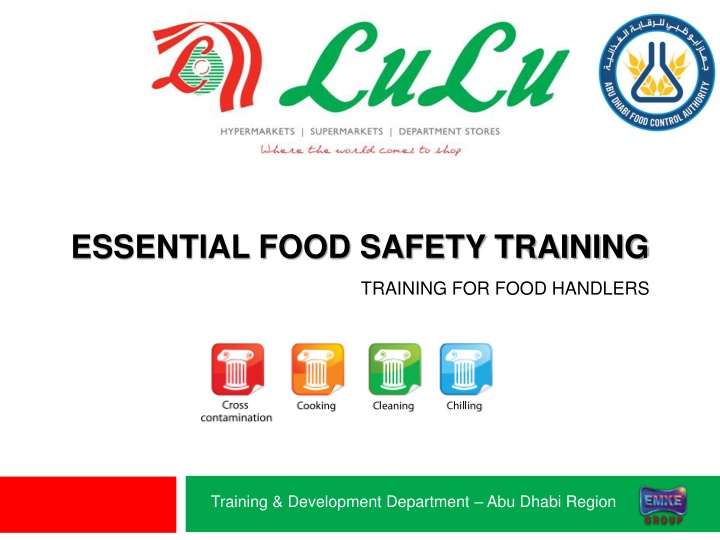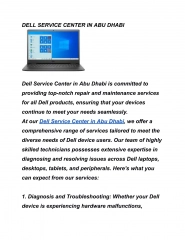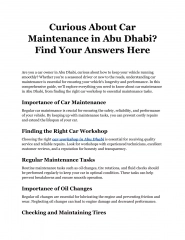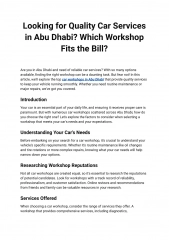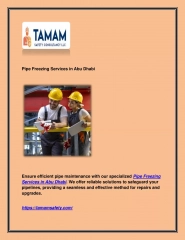Essential Food Safety Training Program in Abu Dhabi
The Essential Food Safety Training (EFST) program in Abu Dhabi is designed to equip food handlers with the knowledge and skills necessary to ensure safe food handling practices. Led by experienced trainers like Navas Khan A., the program covers essential pillars such as avoiding cross-contamination, proper cooking and chilling techniques, and sanitation practices. With a focus on preventing foodborne illnesses, the EFST program emphasizes the importance of food safety for both the handlers and the public. Attendees participate in assessments, group activities, and exams to enhance their understanding of food safety protocols and practices.
Download Presentation

Please find below an Image/Link to download the presentation.
The content on the website is provided AS IS for your information and personal use only. It may not be sold, licensed, or shared on other websites without obtaining consent from the author.If you encounter any issues during the download, it is possible that the publisher has removed the file from their server.
You are allowed to download the files provided on this website for personal or commercial use, subject to the condition that they are used lawfully. All files are the property of their respective owners.
The content on the website is provided AS IS for your information and personal use only. It may not be sold, licensed, or shared on other websites without obtaining consent from the author.
E N D
Presentation Transcript
ESSENTIAL FOOD SAFETY TRAINING TRAINING FOR FOOD HANDLERS Training & Development Department Abu Dhabi Region
2 : Navas Khan A. : Food Safety Trainer & Auditor. : MSc. Microbiology Designation Qualification Name WHO Achievements ADFCA Food Safety Exam Level 5 AM Advanced Food Hygiene HACCP Level 3 Person In charge Assistant Food Safety Team Leader for ISO 22000 ISO internal auditor for 9k, 14k, 22k. Over 4 years Experience in Food Industry I ?
Overview 3 The Essential Food Safety Training (EFST) program consists of: Pre assessment Power point presentation (include photos & Images). Group activities Final assessment exam Course timings : 9.00 AM to 4.00 PM (6 hours training + 1hour break) The maximum number of attendees should be 15 nos. in each session.
Essential Food Safety Training 4 Essential Food Safety Training (EFST) is a program developed by the Abu Dhabi Food Control Authority. It requires all food handlers operating within the Emirate of Abu Dhabi to gain a knowledge and understanding that will help to ensure food is handled safely throughout food chain. The EFST course includes the four essential pillars for safe food handling: how to avoid cross contamination, and how to cook, clean and chill safely. The Importance of Food Safety Food borne disease can affect anyone, but some people are more at risk. For example, young children, the elderly, pregnant women and people who are unwell It is essential for all food handlers to take care to make food safely, to protect the public from food borne disease.
The Importance of Food Safety 5 Food Poisoning is a serious problem that affects every country in the world. Abdominal pain Diarrhea Vomiting Nausea Fever Collapse Food borne disease can affect anyone, but some people are more at risk. For example, young children, the elderly, pregnant women and people who are unwell It is essential for all food handlers to take care to make food safely, to protect the public from food borne disease.
Food Safety Hazards 6 Microbiological (e.g. bacteria) Physical (e.g. broken glass, hair, etc.) Chemical (e.g. cleaning chemicals, pesticides, etc.) Bacteria are very small organisms that cannot be seen without a microscope. Some bacteria are harmful to people and can cause food borne disease. types of
Sources of Bacteria 7 Water Waste People Bacteria Food Pests Dirt
Hand washing 8 Rub hands vigorouslytogether, under running water, for at least 20 seconds Wet hands under warm running water Apply 1 shot of liquid soap to hands Dry hands completely using a paper towel or warm air dryer Rinse off all the lather (and bacteria!) clean all parts of hands especially the nails and fingertips. Hands can easily spread bacteria. They must be thoroughly washed and dried in between tasks, especially before touching ready-to-eat food and after touching raw food.
Personal Hygiene 9 Jewellery and watches should not be worn. Cuts should be completely covered (with a clean waterproof plaster). Employees must not work in food preparation areas if they have been suffering from the following symptoms within the last 48 hours: - diarrhoea - vomiting - fever Any symptoms should be reported to the manager, in food business Bacteria can become trapped in jewellery and watches, and spread from hands to food. If employees are suffering from illness or have uncovered cuts they can also spread contamination.
Protective clothing 10 Hairnet Long sleeved light colored And Washable Clean Apron Clean shoes The human body contains many bacteria. Clean protective clothing protects food handling areas from bacteria on the skin and hair, and clothes worn outside.
Pest control 11 Food Pest: an animal, which lives in or near man s food and is destructive, noxious or troublesome Ants Rats Flies Moths Cockroach Pests carry and spread bacteria. They must be prevented from getting into any food storage or handling area.
Cross Contamination 13 Bacteria can easily spread from raw food (e.g. raw meat) onto hands, knives, chopping boards and other equipment (e.g. fridges). Hands, utensils and equipment must be thoroughly cleaned In between tasks. Raw meat must be kept separate from ready to eat food (e.g. salad) at all times during storage and preparation.
Cross Contamination 14 If possible store raw meat in separate fridge from ready to eat foods. If general purpose fridge is used always store raw meat at the bottom and ready to eat food at the top. Raw meat can spread bacteria to ready-to-eat food (e.g. salad) unless it is kept separate at all times. Bacteria can be spread by contact with hands, utensils or equipment.
Cleaning & Disinfection 16 Cleaning removes dirt and grease from equipment and surfaces, and reduces bacteria. If cleaning includes a disinfection step it can kill all bacteria. Re-usable cloths (e.g. dish towels) can easily pick up bacteria and spread them. Single-use cloths (e.g. paper towels) are safer as they are thrown away after each task. Heat kills bacteria, so if a cleaning method uses very hot water (e.g. a dishwashing machine) the bacteria will all be killed. This is another method of disinfection . A cleaning product called a disinfectant can kill bacteria if it is used correctly. The cleaning process must include washing (to remove grease), disinfection (to kill bacteria) and drying.
Low Risk & High Risk cleaning 17 Some items and areas are highrisk because they come into direct contact with food or hands. They need to be disinfected to kill bacteria, whereas lowrisk items and areas do not.
Danger Zone 19 Destroys most pathogens Too hot (start to die) Multiply (rapidly 20 C 50 C) Spoilage slow growth, most pathogens no growth (<5 C) Dormant (no growth spoilage or pathogens) (below (-18 C) Bacteria grow quickly in warm temperatures.(i.e. danger zone). When they get very cold they stop growing, and when they get very hot they are killed, so keep food either hot or cold.
Cooking 20 When cooking meat, there are colour changes to show that safe temperatures have been reached. White meat (e.g. chicken) must have changed from pink to white all the way through. Heat kills bacteria. If food reaches a high enough temperature during cooking the bacteria will be killed. If a liquid item is boiling throughout then it has reached a safe cooking temperature.
Cooking 21 Red meat that has been chopped or minced (e.g. kebab meat, burgers) must have changed from red to brown all the way through. When cooking mixed food items (e.g. biryani), it must be steaming hot throughout to show that a safe temperature has been reached.
Hot Holding & Reheating 22 Hot-holding When hot-holding, food must be kept hot to stop bacteria from growing. Food that is stored or displayed hot must be kept at 63 C or above for a maximum of 2 hours. If there is no temperature measurement, the food must be visually hot (e.g. steaming) to show that it is still safe. Re-heating When re-heating, food must get hot enough to kill bacteria. It must be bubbling / steaming throughout to show that a safe temperature has been reached. Temperature Probes The use of temperature probes varies depending on the size and nature of a business. In some businesses (e.g. manufacturing) temperatures are measured continuously to check the safety of all food produced. In other businesses (e.g. catering and food service) visual checks can be used each time food is cooked or re-heated. Temperature probes can be used to prove that cooking, re-heating hot food are safe. When hot-holding, food must be kept hot to stop bacteria from growing. When re-heating, food must get hot enough to kill bacteria.
Cold & Frozen Storage 23 Many types of food need to be kept at cold temperatures to reduce the growth of bacteria. Storage and display equipment should keep food below 5 C. Food can be kept for longer periods of time if it is frozen. Freezing temperatures (i.e. -18 C) stop all bacteria growing. Food should be kept in air-tight packaging and labelled with the date of freezing. Food also needs to be labelled and used within its shelf life. Most bacteria stop growing or grow very slowly in cold temperatures. All bacteria stop growing in frozen temperatures.
What are the risks of cooling and storing food like this? 24
Chilling of Hot foods 25 The best method of chilling hot food is with specialised chilling equipment (e.g. a blast chiller). Specialist equipment can chill food in 90 minutes. This minimises the time it spends in danger zone temperatures, where bacteria can grow. Without specialist equipment, food must be chilled as quickly as possible. Methods include: ice, cold water and placing food in cold areas. It must not be left to cool at room temperature.
DISCUSSION Training & Development Department Abu Dhabi Region
